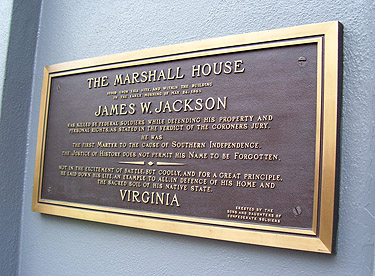
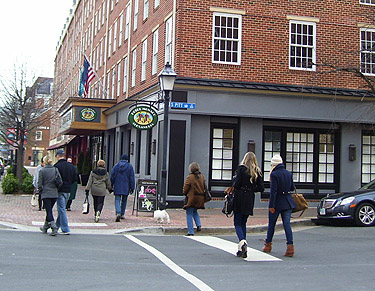
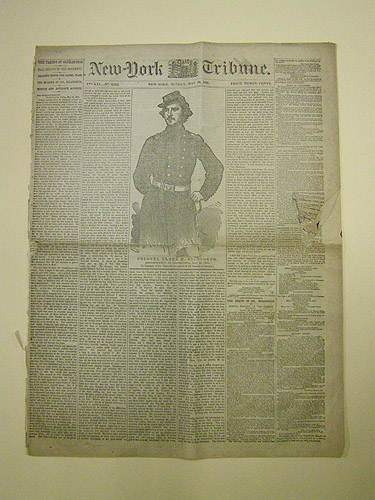
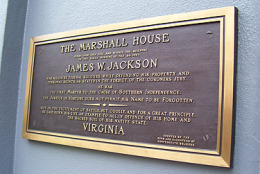
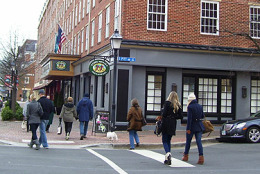
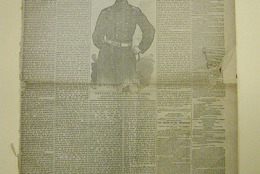
Kathy Stewart, wtop.com
ALEXANDRIA, Va. – The familiar brick sidewalks of Old Town Alexandria served as the backdrop to a bit of American history you may not be familiar with: The first fatal shots of the Civil War were fired in Old Town in May 1861.
Fort Sumter fell a month earlier. (One person died at the South Carolina battle, but it was an accident.) And the first major battle, Manassas/Bull Run, didn’t start until the middle of July.
But a controversial plaque, that’s been in place for decades outside of an Alexandria hotel, memorializes the man who killed the first Union solider of the war.
If you’ve ever visited Old Town, you may have walked right past it. The bronze marker is attached to the front facade of the Monaco Hotel at the corner of Pitt and King streets.
Erected by the Sons of Confederate Veterans, the plaque pays tribute to James W. Jackson, who killed Union soldier Col. Elmer Ellsworth, who was President Lincoln’s personal assistant. Jackson however was immediately killed by Union Cpl. Francis Brownell.
This was a huge story in 1861 and ran on the front page of the New York Tribune. Jackson, an ardent secessionist, was owner of the Marshall House, a type of boarding house/hotel/tavern, which stood where the Monaco Hotel now stands.
Lance Mallamo, director of the Office of Historic Alexandria, says Jackson raised a huge secession flag over the Marshall House after Virginia voted to secede. Legend has it the flag could be seen from southern portions of D.C.
According to Mallamo, when Union forces entered Old Town, Ellsworth saw the flag and went to the roof of the Marshall House and took it down.
Turning to a New York Tribune reporter and Brownell, he said, “Well boys, I’ve got it.” Then he heard a voice saying, “And I’ve got you.”
It was Jackson with a gun. He shot and killed Ellsworth and then Brownell shot and killed Jackson.
The plaque doesn’t mention Jackson’s own death at the hands of union soldiers.
For some, the plaque evokes the same feelings that divided the North and South 150 years ago. And even though some residents have wanted it to come down, the plaque lies on private property and city officials have no control over its fate.
Follow @WTOP on Twitter.
(Copyright 2013 by WTOP. All Rights Reserved.)







